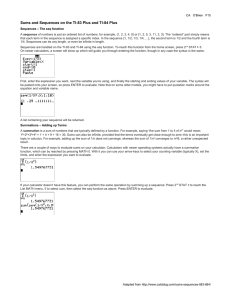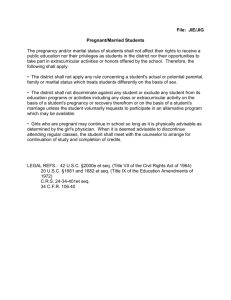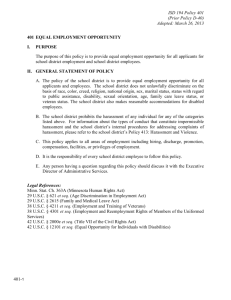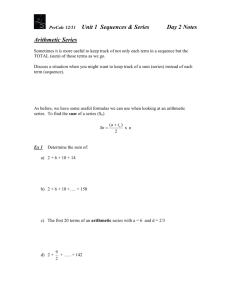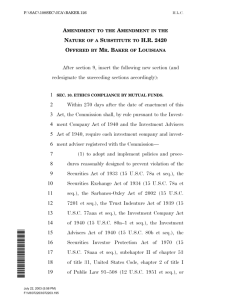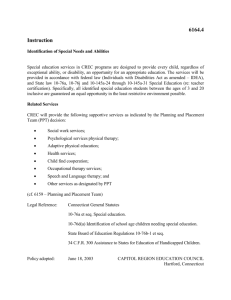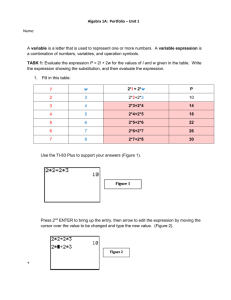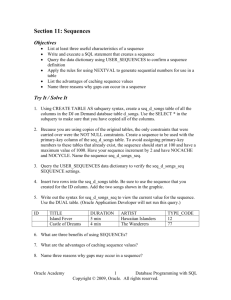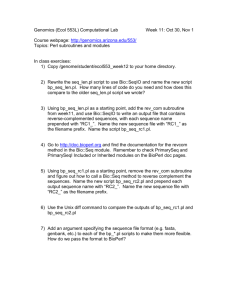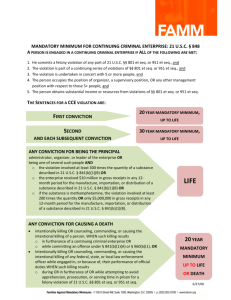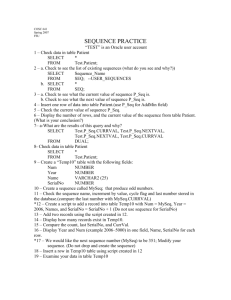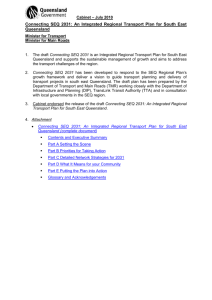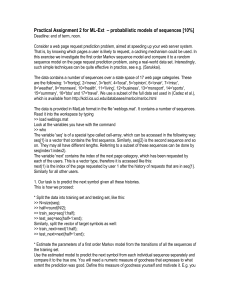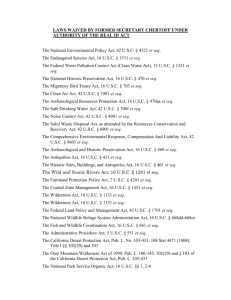Sequence and Series – TI
advertisement
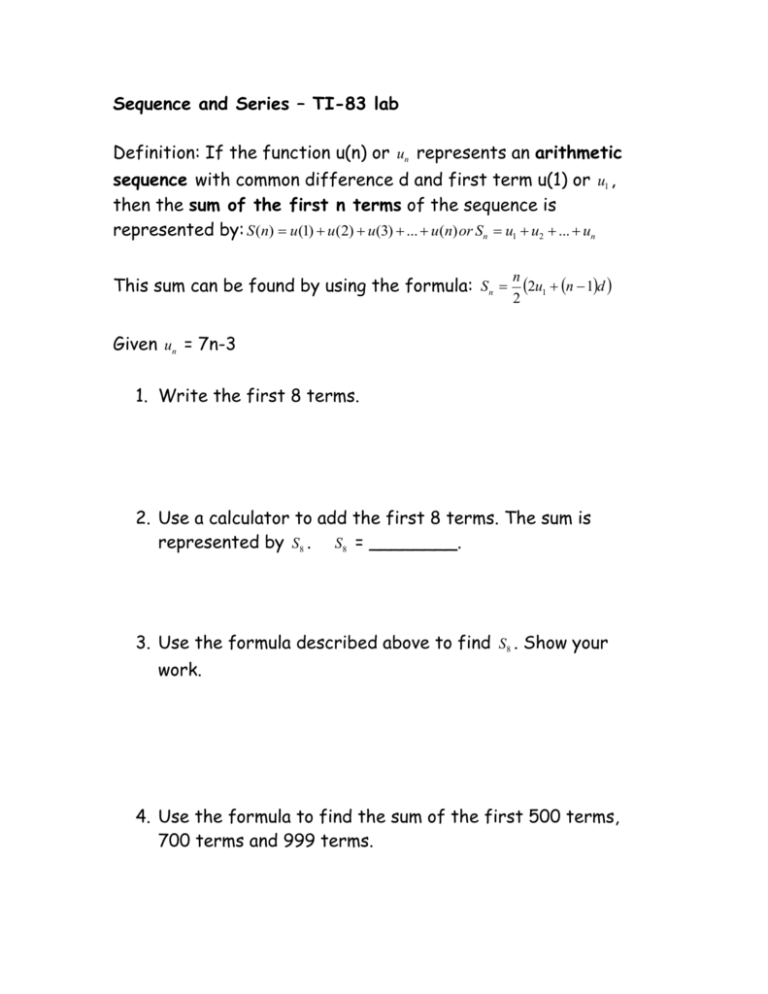
Sequence and Series – TI-83 lab Definition: If the function u(n) or un represents an arithmetic sequence with common difference d and first term u(1) or u1 , then the sum of the first n terms of the sequence is represented by: S (n) u(1) u(2) u(3) ... u(n) or Sn u1 u2 ... un This sum can be found by using the formula: S n 2u1 n 1d n 2 Given un = 7n-3 1. Write the first 8 terms. 2. Use a calculator to add the first 8 terms. The sum is represented by S8 . S8 = ________. 3. Use the formula described above to find S8 . Show your work. 4. Use the formula to find the sum of the first 500 terms, 700 terms and 999 terms. The TI-83 can add the terms of the sequence using the sum seq command. 5. Use the sum seq command on your calculator to find S8 . 8 Mathematically we represent S8 as 7n 3 . K 1 To enter this on your TI-83(Buttons are in bold): Press 2nd STAT to access the LIST menu Use arrow to select the MATH menu. Type 5 to select sum( Press 2nd STAT to access the LIST menu Use arrow to select OPS menu Type 5 to select seq( Type 7K-3, K, 1, 8, 1)) followed by ENTER sum(seq(7K-3, K, 1, 8, 1)) 7K-3 is the sequence, K is the variable being change, 1 and 8 are the beginning and end respectively and the second 1 is the count. 6. Use the sum(seq( to find S 95 , S150 , and the S 50 . Definition: If the function un represents a geometric sequence with common ratio r and first term u1 then the sum of the first n terms of the sequence is represented by: Sn u1 u2 ... un . n Mathematically S n = u K 1 k u1 1 r n This sum can be found by using the formula: S n 1 r Given the sequence un = 2(1.1) n 7. Find the first 6 terms. 8. Use a calculator to add the first 6 terms. This sum is S 6 . 9. Use the formula above to find S 6 . Show your work. 10. Use the formula to find the sum of the first 500 terms, 700 terms and 999 terms. 11. Use the sum(seq( to find S 95 , S150 , and the S 50 . Application You receive two job offers. The first pays $3000 for the first month and a $100 more each month. The second pays $500 for the first month and 10% more each month. 12. Write a formula for each job using sum notation. 13. What is the total amount earned from job 1 after two years(24 months)? 14. What is the total amount earned from job 2 after two years(24 months)? 15. Which job offer should you accept and why?
